Steve Mann, PhD (MIT '97), P.Eng. (Ontario),
- Visiting Full Professor, Stanford University,
Department of Electrical Engineering,
Room 216, 350 Serra Mall, Stanford, CA 94305.
- Chair of the Silicon Valley Innovation & Entrepreneurship Forum (SVIEF).
- Founding Member of the IEEE
Council on Extended Intelligence
- Marquis Who's Who 2018 Albert Nelson Marquis Lifetime Achievement Award.
Invented
wearable computing in his childhood,
brought this invention to MIT
to found the MIT wearable computing project, and
"persisted in his vision and ended up founding a new
discipline." -- Nicholas Negroponte, MIT Media Lab Director, 1997 (link).
Invented, designed, and built the
world's first smartwatch in 1998
(patent filed 1999, featured on cover of Linux Journal July 2000)
which he presented at IEEE ISSCC 2000 where he was named "The father
of the wearable computer".
Inventor of HDR (High Dynamic Range) imaging, used in more than 2 billion smartphones. ("The first report of digitally combining multiple pictures of the same scene to improve dynamic range appears to be Mann 1993" -- Robertson etal, JEI 12(2).)
Founded companies with valuation in excess of $1 billion, together with
students. (See http://wearcam.org/news/)
Mentorship examples:
- Maya Burhanpurkar, Age 15, mentored at Mann's lab,
won the Canada-Wide 2014 Science Fair, with scientific
experiment based on Mann's concept of absement (link).
Recipient of the international Queen Elizabeth II Diamond Jubilee medal.
She is now at Harvard University, studying
Engineering Physics and Computer Science.
- Mann's MaSc students James Fung (now with Google) and
Chris Aimone, together with Mann, and others, co-founded
InteraXon
and raised $28,800,000. InteraXon's
Muse
product, now sold in Best Buy stores all across North
America and on Amazon.com, is known as "The King of
Wearables" (BetaKit), the #1 in wearables (PC Retail)
and "the holy grail for mindfulness",
("Muse 2
review: The world's best meditation tech just got even better").
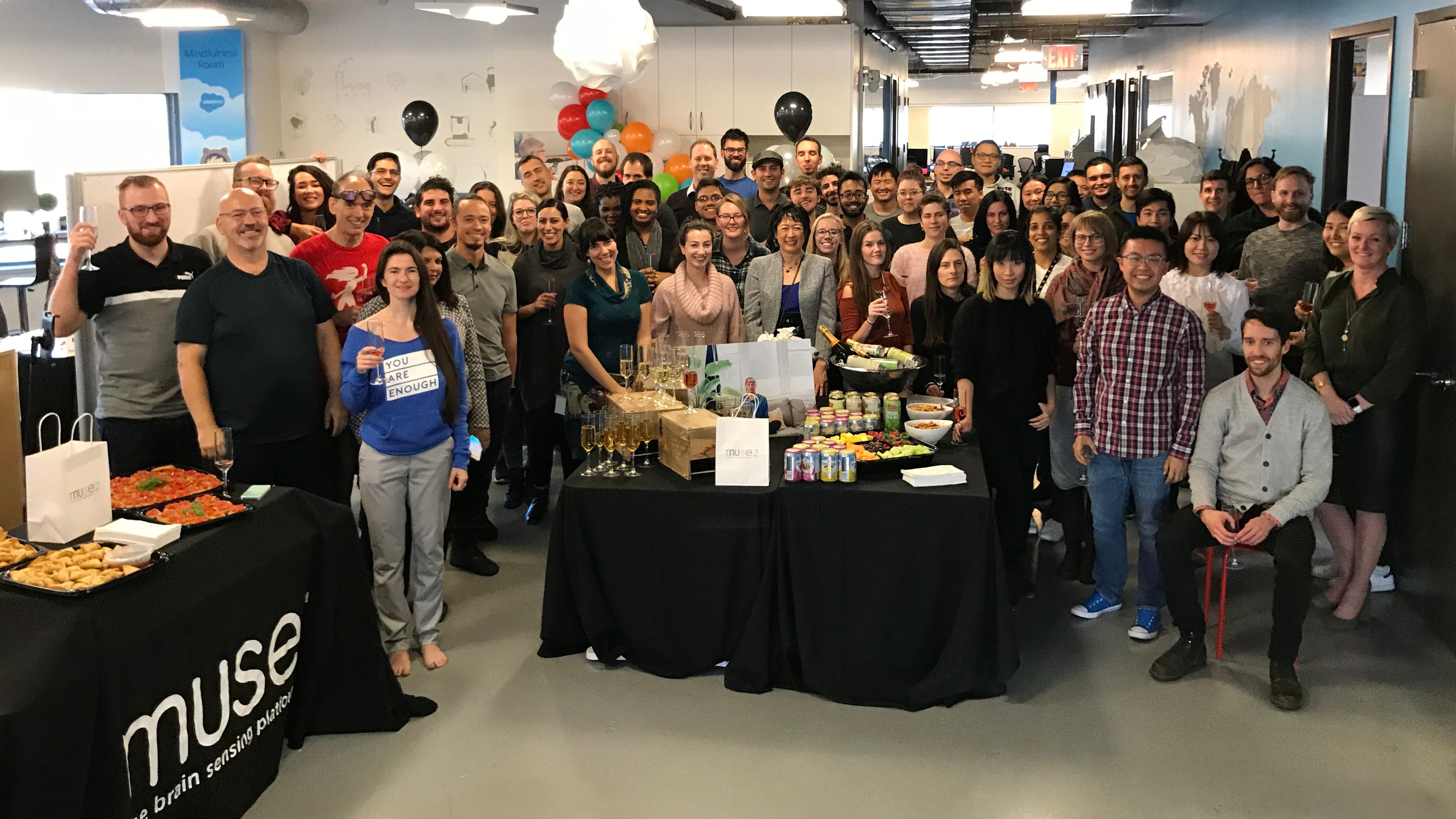
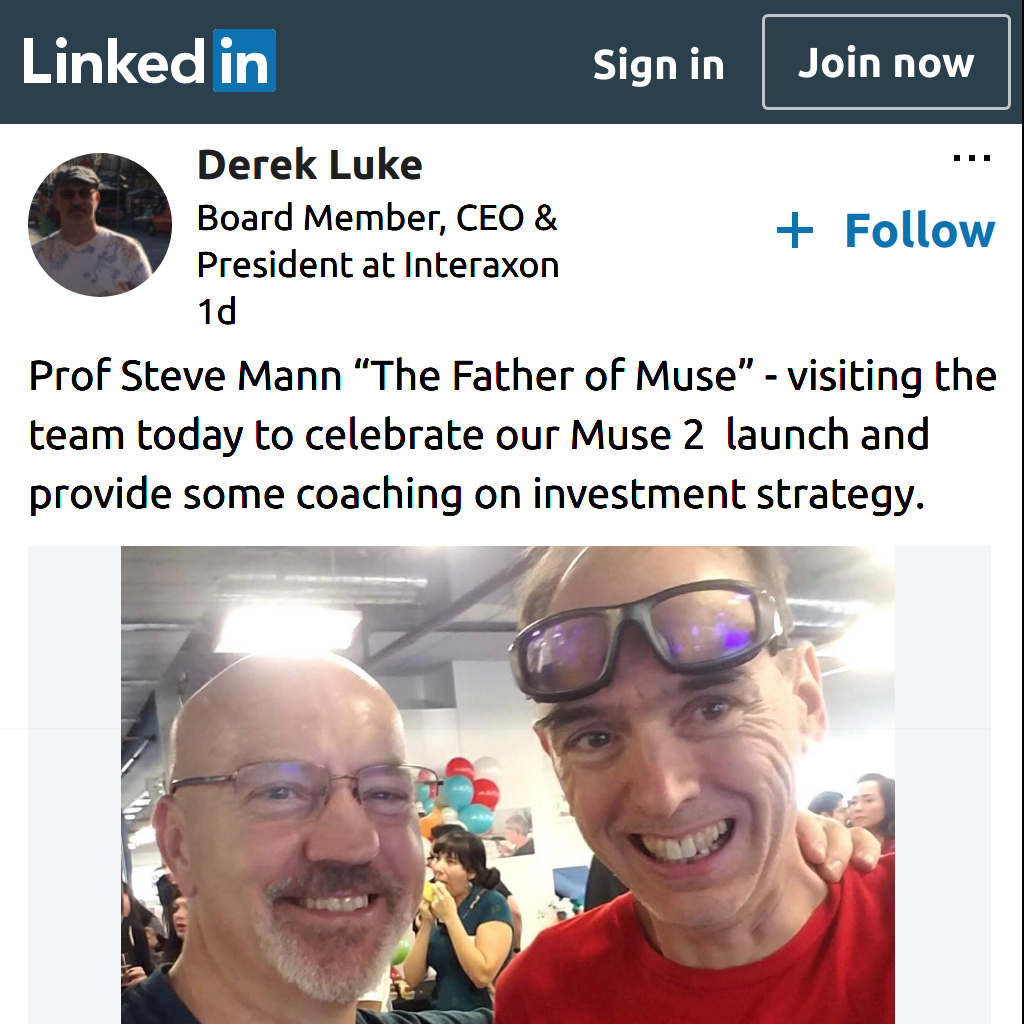
Caption: Muse2 Launch day at InteraXon, 2018 October 30th.
See also Time-frequency analysis of visual evoked potentials using chirplet transform,
Cui, Wong, and Mann, Electronics Letters 41(4), p217-218.
- While he was Mann's PhD student and TA, Ryan Janzen founded a
transportation company (Transpod), raised $65,000,000 ($20,000,000
investment + 32,000,000 Euro grant), and also won the "Innovation of
the Year Award".
- While he was Mann's PhD student and TA, Raymond Lo (now at Harvard)
founded Metavision, raised $75,000,000, and created the world's
first extramissive spatial imaging augmented reality
glass,
based on the metavision/metaveillance
and wearable computing technology that Mann invented
during childhood [IEEE Computer 30(2), p25-32, February 1997;
USPTO 61/748,468, 61/916,773, and 20140184496]
using video feedback to sense sensors and visualize
their capacity to see.
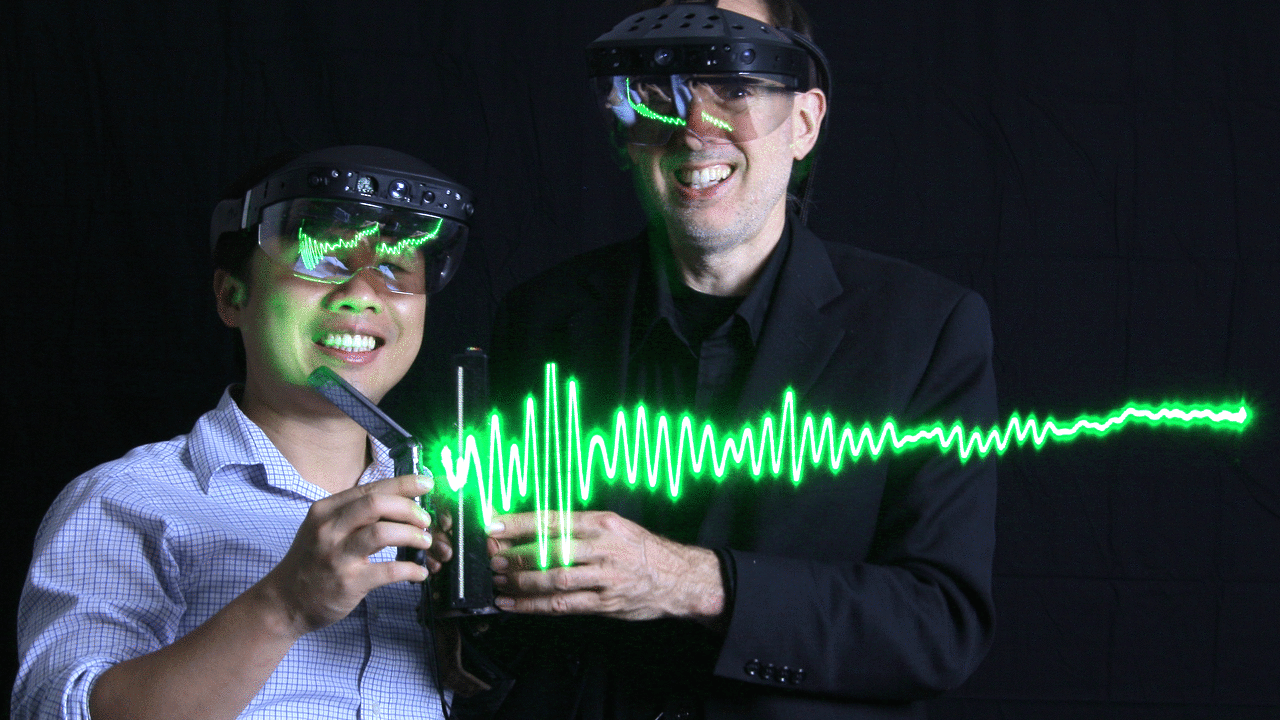
Caption: Raymond Lo and Steve Mann with Metavision eyeglasses.
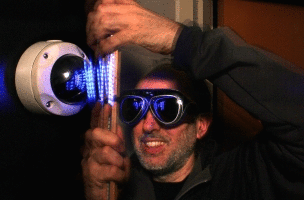
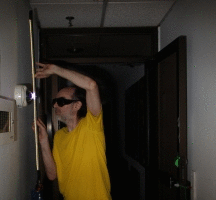
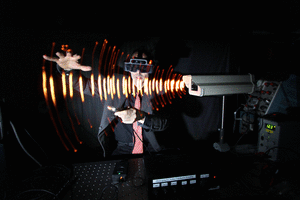
Caption: Metavision for visualizing vision sensors, and seeing their capacity to see.

Caption: One of Steve Mann's childhood inventions,
Metavision
(the vision of vision, sensing sensors, and sensing their capacity to sense)
with the Sequential Wave Imprinting Machine (SWIM).
In this early photograph, Mann has captured a camera's
capacity to "see", i.e. a visualization of vision.
More generally his ability to
sense sensors and sensing their capacity to sense allowed him to create
many other inventions in the area of vision, sensing, and sensors.
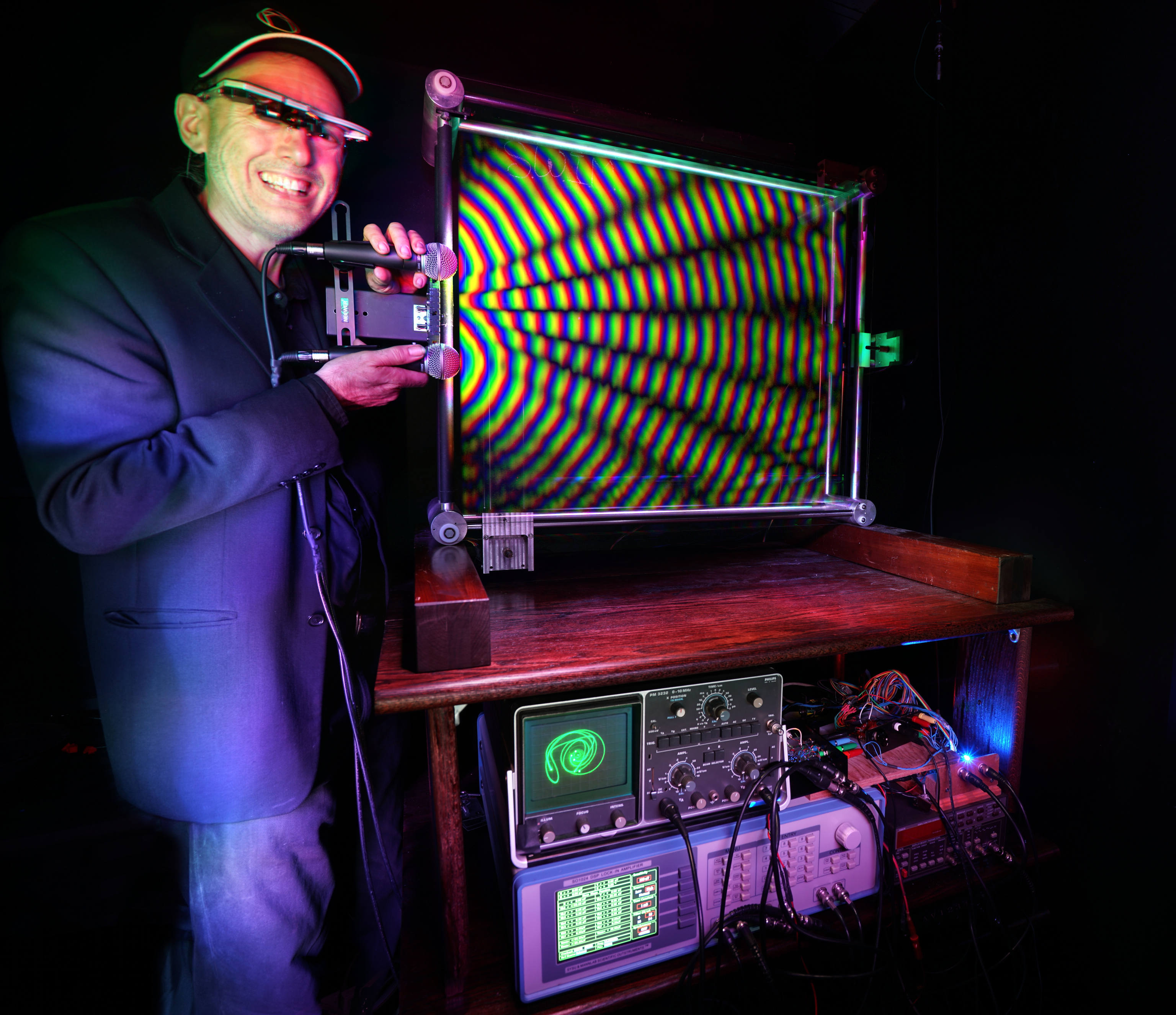
Metaveillance for sensing sensors, and sensing their capacity to sense.
In this photograph we we see the sensory interference pattern between
two Shure SM58 microphones.







